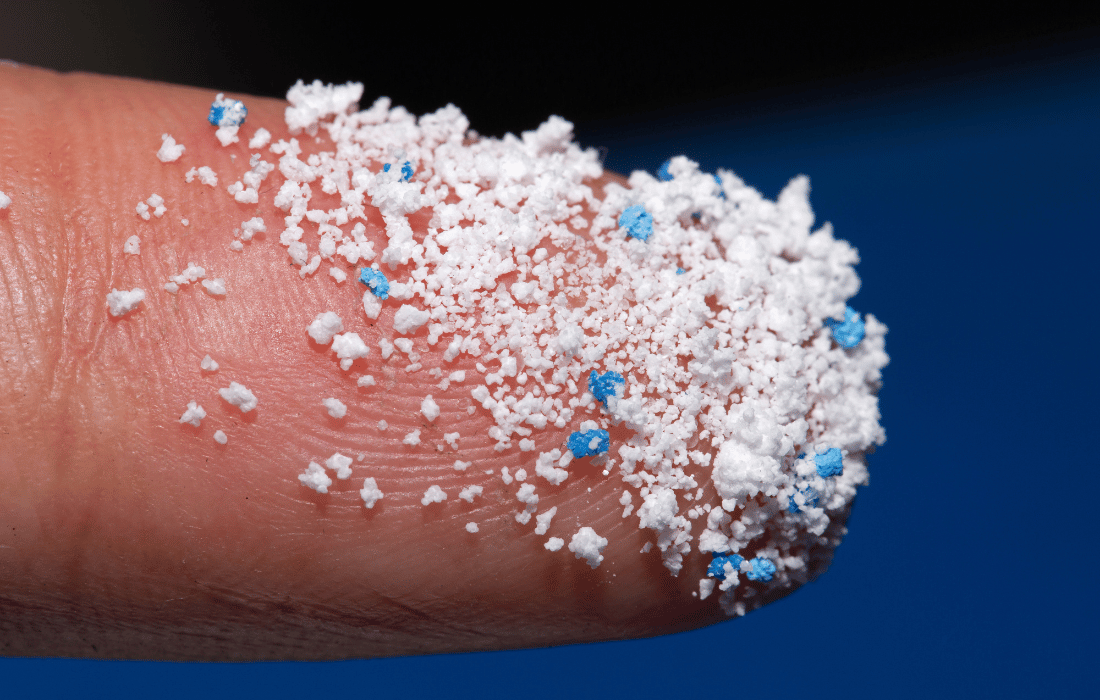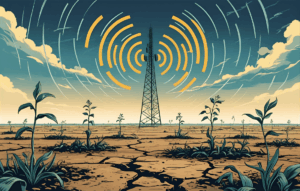In recent years, the silent threat of microplastics has gained increasing attention from researchers and health advocates. These tiny plastic particles, less than five millimeters in diameter, are pervasive in our environment. They originate from a variety of sources, including the breakdown of larger plastic debris, microbeads in personal care products, and synthetic fibers from clothing. Alarmingly, it is estimated that the average American consumes a credit card’s worth of plastics every week through food, water, and air. These particles are small enough to enter our bodies through ingestion, inhalation, and dermal contact, raising significant concerns about their impact on human health.
Microplastics in the Environment
Microplastics have infiltrated every corner of the Earth, from the deepest oceans to the highest mountains. They are found in soil, water, and air, making them virtually impossible to avoid. The widespread use of plastic in everyday products and the lack of efficient waste management systems have contributed to this global contamination. As these plastics break down into smaller particles, they persist in the environment, potentially entering the food chain and accumulating in living organisms.
Microplastics can arise from various sources:
- Land Disposal: Discarded plastics from land-based activities are a significant source.
- Wastewater Treatment: Microplastics from personal care products and household waste can bypass treatment systems.
- Tire Wear: Abrasion of vehicle tires releases microplastics into the environment.
- Textile Washing: Synthetic fibers from clothing are released during laundry.
- Paint Failure: Degradation of paints on buildings and ships contributes to microplastic pollution.
- At-Sea Losses: Direct dumping and accidents at sea release large quantities of plastics.
Transport mechanisms, such as riverine and atmospheric movement, as well as stormwater runoff, further spread microplastics. In surface waters, plastics undergo weathering, biofouling, and aggregation, eventually sinking and accumulating in ocean sediments, which are likely their ultimate destination.
Microplastics and Human Health
The presence of microplastics in the human body is a growing concern, particularly regarding their potential impact on the reproductive system and other vital organs. Recent studies have revealed alarming findings about the prevalence and composition of microplastics within human tissues, including the testes, placenta, and various organs. This raises urgent questions about the potential health risks for men, women, and children.
Microplastics in Testicles
A recent study published in Toxicological Sciences has revealed alarming findings about the prevalence and composition of microplastics within canine and human testes, and their potential associations with sperm count and reproductive organ weights. This study is one of the first to quantify and characterize microplastics in the human reproductive system, shedding light on the potential consequences for male fertility.
Researchers from the University of New Mexico used advanced pyrolysis-gas chromatography/mass spectrometry to analyze 47 canine and 23 human testes for the presence of microplastics. They identified 12 types of microplastics, with significant inter-individual variability. The mean total microplastic levels were found to be 122.63 µg/g in dogs and 328.44 µg/g in humans. The study found a negative correlation between specific polymers, such as PVC and PET, and the normalized weight of the testis, suggesting potential adverse effects on reproductive health.

Image Source: ScienceDirect
Microplastics in Women’s Placentas
In addition to the male reproductive system, microplastics have also been found in women’s placentas. A study conducted in 2024 revealed the presence of microplastics in every human placenta tested. This study analyzed 62 placental tissue samples and found microplastics in all of them, with concentrations ranging from 6.5 to 685 micrograms per gram of tissue, which is much higher than levels found in the human bloodstream.
Researchers used a novel, high-resolution technique to scan for plastics in human blood and tissue. They separated most biological material from plastic solids, using chemicals and high-speed ultracentrifuges, and then broke down the polymers to determine their specific compounds. The study found that more than half of all plastics in the placenta are polyethylene, the most commonly produced plastic on our planet, responsible for most single-use bags and bottles. Other plastic particles identified include polyvinyl chloride, nylon, and polypropylene, all of which have likely been in the environment for several decades.
Potential Impacts on Maternal and Fetal Health
The implications of microplastics in the placenta are particularly concerning, as the placenta plays a crucial role in providing nutrients and oxygen to the developing fetus while also removing waste products. The presence of microplastics in the placenta could potentially interfere with these functions, leading to adverse pregnancy outcomes. Research suggests that smaller plastic pollutants can invade cells more easily and may disrupt fetal brain development, potentially causing suboptimal neurodevelopmental outcomes.
The reasons for the wide range of microplastic concentrations found in human organs, including the placenta, are currently unknown. Factors such as environmental, dietary, genetic, maternal age, and lifestyle choices may contribute to these variations. Further research is needed to determine the extent to which microplastic pollution can be carried across the complex placental barrier and its potential impacts on maternal and fetal health.
Microplastics and Children’s Health
Children are particularly vulnerable to the effects of environmental toxins, including microplastics. Their developing bodies and organs are more susceptible to damage, and they have higher exposure levels relative to their body weight. Ingesting microplastics through food and water, or inhaling them from the air, could have long-term health consequences for children. Research is still in the early stages, but there is growing concern that microplastic exposure could impact growth, development, and overall health.
Broader Implications for Human Health
The potential health risks of microplastics extend beyond the reproductive system and pregnancy. Microplastics have been found in various human tissues, including the lungs, liver, and kidneys. Their small size allows them to penetrate biological barriers and accumulate in organs, potentially causing inflammation, oxidative stress, and other cellular damage. Some studies have suggested links between microplastic exposure and respiratory issues, gastrointestinal disorders, and even cancer.
Microplastics: Sources and Formation
To fully grasp the issue of microplastics, it is crucial to understand their origins and pathways into the environment. Society’s reliance on plastics has grown since commercial production began in about 1950. Plants’ versatility, stability, lightweight, and low production costs have fueled global demand, resulting in widespread use and eventual disposal in various forms.
Primary Microplastics are intentionally manufactured, such as microbeads used in personal care products and industrial abrasives. Despite regulations like the Microbeads-Free Waters Act of 2015 in the U.S., which bans microbeads in rinse-off personal care products, they remain in non-rinse-off products and industrial applications.
Secondary Microplastics result from the fragmentation of larger plastics during use or after disposal. These include particles from tire wear, degraded paints, and synthetic fibers released during washing. Environmental conditions such as UV exposure, friction, and temperature can accelerate this breakdown.
Global Transport and Distribution
Microplastics are distributed globally through various pathways:
- Rivers transport plastics from land to sea.
- Atmospheric Transport disperses microplastics through the air.
- Stormwater Runoff carries debris into waterways.
In aquatic environments, microplastics undergo weathering, biofouling, and aggregation, leading to their eventual sinking and accumulation in sediments. The biofouling process involves colonizing microplastic surfaces by microorganisms, which can cause buoyant plastics to sink.
Ecological and Health Effects
Microplastics pose a significant risk to marine life and ecosystems. They are ingested by various organisms, from plankton to whales, potentially compromising feeding, metabolism, reproduction, and behavior. The smaller the particles, the more likely they are to penetrate cell membranes and tissues, exacerbating health risks.
Microplastics can also absorb and concentrate environmental contaminants, such as persistent organic pollutants (POPs), heavy metals, and pathogens, further increasing their toxicity.
Human Exposure and Health Risks
Human exposure to microplastics occurs through multiple routes:
- Ingestion: Consuming contaminated food and water.
- Inhalation: Breathing in airborne microplastics.
- Dermal Contact: Skin exposure to products containing microplastics.
The health effects of microplastic exposure are not fully understood, but studies suggest potential risks including inflammation, oxidative stress, and cellular damage. The potential for microplastics to disrupt endocrine functions and contribute to cancer is also a concern.
Indoor Microplastics
Microplastics are also prevalent indoors, where people spend over 90% of their time. Indoor sources include synthetic textiles, household dust, and consumer products. The abundance of polymeric products indoors magnifies the risks associated with microplastic exposure.
Addressing the Microplastic Problem
Solving the global microplastic problem requires a multi-faceted approach:
- Pollution Prevention: Implementing better waste management practices and reducing plastic use.
- Developing Degradable Polymers: Creating plastics that break down more easily in the environment.
- Expanding Plastic Reuse: Encouraging recycling and the use of alternative materials.
Interdisciplinary collaboration and holistic approaches are essential to understanding and mitigating the impacts of microplastics on the environment and human health.
Wrapping Up
The rising threat of microplastics to human health is a pressing issue that warrants more attention and action. The findings from recent research highlight the need for further studies to understand the full extent of microplastic exposure and its health implications. By making conscious choices and advocating for sustainable practices, we can reduce our exposure to microplastics and other environmental toxins, ultimately protecting our health and the environment. Personally, I try to avoid plastic use as much as I can. However, I’m sure even with eating organic, avoiding plastic and processed foods, I probably am still partially plastic. The best we can do is practice a holistic lifestyle, keep our detox pathways working properly, and bring awareness to this quickly growing issue.












